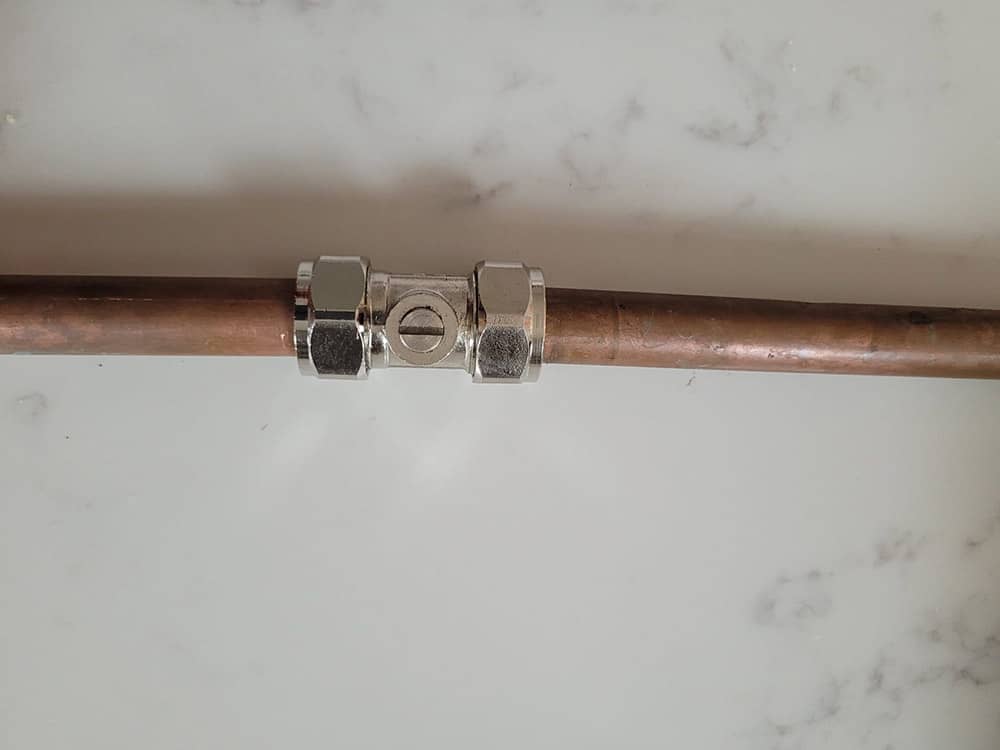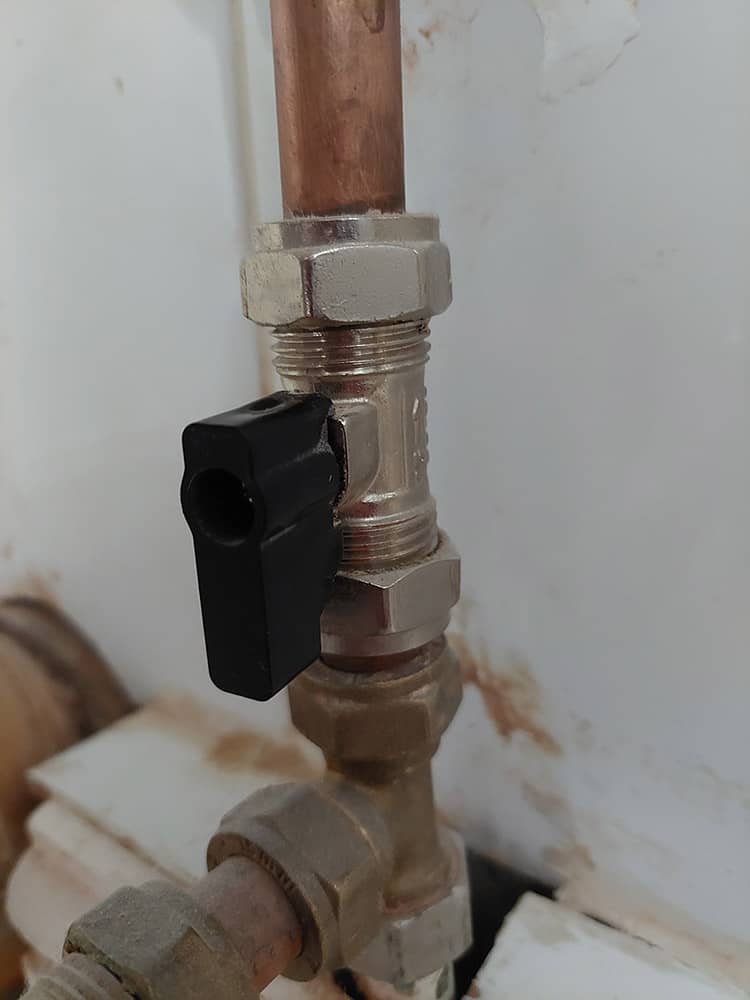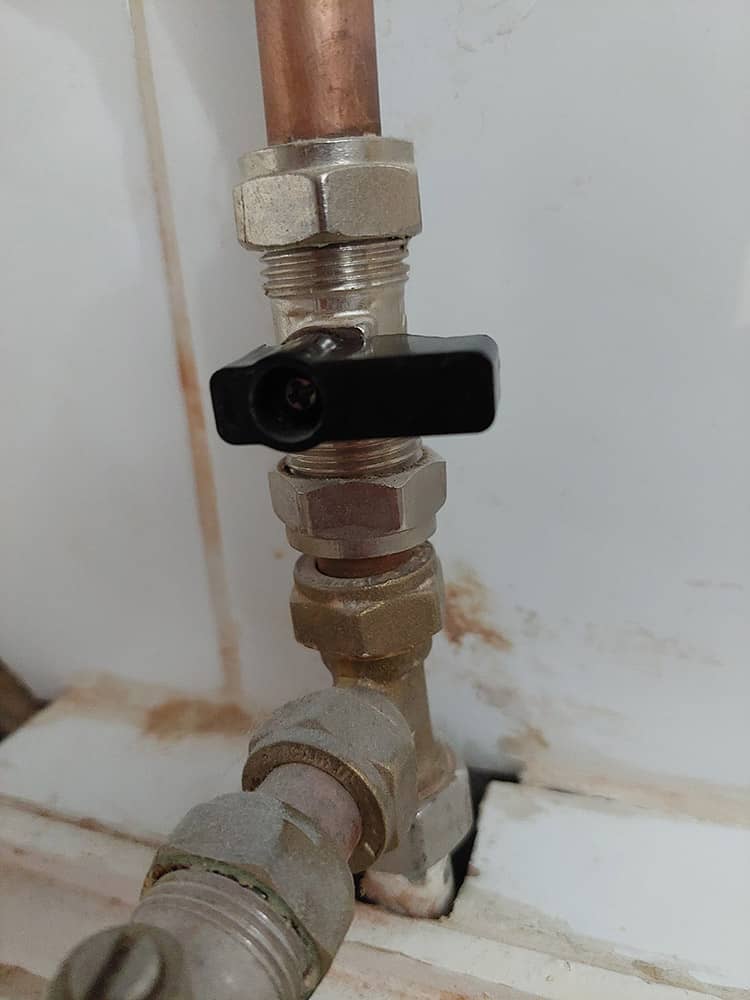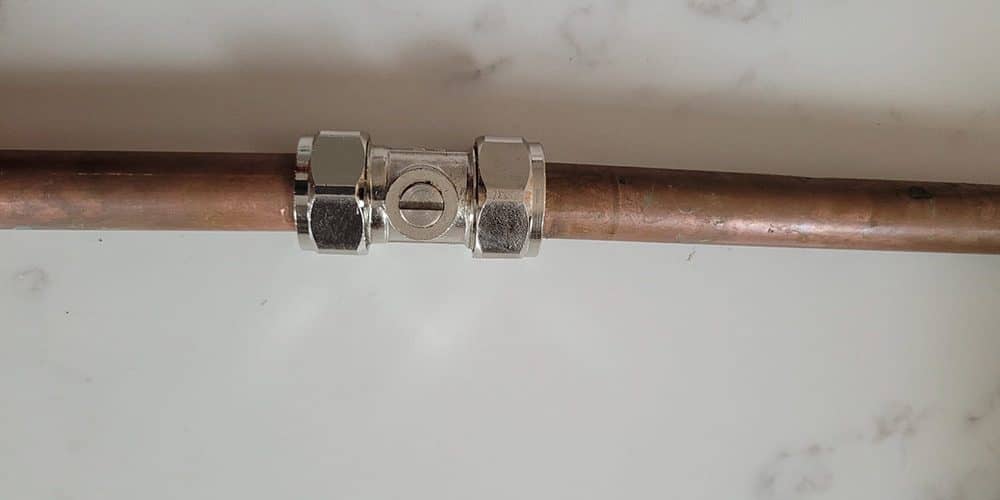If your tap won’t turn off, it is important to address the issue promptly to avoid water wastage and potential damage to your plumbing system and property.
Reasons why your tap isn’t turning off
There are several potential reasons preventing you from turning off your tap. The most common causes tend to be:
- The tap handle is stuck or corroded.
- The tap needs a new washer.
- The valve or tap body is broken.
Oliver Osmore, Managing Director at Maintracts Services, has provided the following steps you can take to try and turn off a tap that will not stop running.

Stay calm! Don’t panic
A running tap that won’t turn off can send homeowners into immediate panic. Try to assess the situation calmly to figure out if you can resolve the issue yourself or if you need to call a professional plumber.
Turn off the water supply
There are two options here, you can either locate and turn off your main water stop valve, which is typically located near the water meter or where the main water pipe enters your home, or you can locate and turn off the isolation valve. Turning off the main valve will stop the flow of water and prevent further wastage, but it will also turn off the water supply to your entire home. It is crucial to find and operate your water stop valve to ensure you can quickly address any plumbing emergencies. Proper operation of your water stop valve can save you time, money, and stress in the event of a plumbing issue.
We usually recommend closing the isolation valve connected to the troublesome tap so that you only shut off the water supply to the tap in question. This will ensure you can continue using all the other taps in your home whilst you resolve the problem. Understand how to manage water flow with your toilet isolation valve to ensure convenience and control over your plumbing system.
Understanding Ballofix® isolation valves
Isolating valves can be tricky to spot if you are not accustomed to them. Ballofix® is a brand of isolating valves commonly used in plumbing and heating systems. Ballofix® valves are compact and versatile valves that can easily be installed in areas with limited availability and easy control of the flow of water in pipes. They have a circular centre component with a linear slot in the middle as seen in the picture below:

Ballofix® isolator valves are intended to be installed as forms of local isolation to any outlet. In theory, if you went into a new build property, all the hot and cold-water supply to the basins, kitchen sinks, toilets, even the showers and bath, should all be fitted with a local isolation valve as per the industry standards.
While it is possible to attach a handle to a Ballofix® valve, many homeowners with minimalist, modern bathrooms that boast lots of clean lines in their design opt not to have them. As with most things nowadays, aesthetics tends to overrule practicality. Isolator valves without a handle can be difficult for a layman to identify.
They operate on a quarter-turn mechanism, which means you can quickly turn the valve on or off with a 90-degree rotation using a flat head screwdriver (if the valve has no lever attached). When looking at the slotted disc in the centre of the valve, you can tell whether the valve is open or closed:
- For the valve to be open (water running), the slot in the centre of the disc needs to be running in line with the valve. Imagine the water is passing through the valve from one end to another.
- For the valve to be closed (shut off the water), the slot needs to be turned 90 degrees so that it isn’t aligned with the valve.
When a customer rings into our helpdesk at Maintracts Services, we will always talk them through how to locate and operate the isolator valve to turn off the water supply. This ensures the property and its occupants are safe while we try to decipher a cause and solution.
Ballofix® valve with lever:

(water running)

(water closed off)
Release the handle
Once you have isolated the water supply, you could try to release the handle. If the handle is stuck, you could try gently turning it backwards and forwards. Avoid using excess force when doing this, as the handle could break and exasperate the problem. After all, if water is running from a tap spout into a basin/bath, it may be a huge waste of water, but the water is still draining away. The water is contained enough to avoid flooding your property. However, if you start playing around too forcefully with the tap and it breaks, it could potentially create a situation where the water sprays from the tap body, landing outside the sink or bath and causing property damage.
Clean and service the tap
If you are confident doing it, you can take the handle off, take the tap body out, and give it a good clean and service.
To take the tap apart:
- Locate the screw that holds the handle in place, which will either be under a small cap or cover that you would have to take off. You can then loosen the screw and remove the handle to expose the tap cartridge (tap body). This is the brass or plastic component inside the tap that operates when you turn the handle and allows the water to flow through.
Traditionally, a tap body used rubber washers that screw down and sit against a flat brass seat to create a watertight seal and prevent the water leaking. However, modern taps, such as quarter turn taps or taps that you lift and rotate left and right, use ceramic cartridges. These use ceramic discs that rotate against each other. Ceramic cartridges tend not to be serviceable, and you generally must replace them.
Loosen the cartridge and remove it using an adjustable spanner or socket set. - Once the cartridge is removed, clean/descale and service it. Manufacturers will often recommend that the mechanical components inside their taps and valves are descaled. They recommend taking it out and submerging it in vinegar and warm water. As professional plumbers, we tend to use descaling solution to do the job.
- Replace the tap washer if it has one.
- Reassemble the tap by putting the body back, then the handle. Tighten up the screw and replace the cover plate.
- Reinstate the water supply and test thoroughly.
If none of the steps above are successful, you may need to purchase a new tap body. If you do need to buy a replacement cartridge, it is worth knowing that they are not all the same. A lot of the time tap components are specific to each manufacturer/model of tap. Reputable manufacturers such as Grohe and Bristan make hundreds of different types of bodies for their taps. So, if you must replace one, you need to be able to identify it and establish who the tap manufacturer is and the specific model. If you are not sure, take it with you to the shop or have it to hand if you are shopping online.
At Maintracts, we highly recommend Grohe and Bristan taps to customers. They are reputable, well-established brands which means that if a customer needs to replace parts for a new tap in 5-10 years’ time, the parts will be reliably available.
If you have any questions about tap recommendations or need assistance with your plumbing fixtures, feel free to contact us today. Our team is here to provide expert advice and solutions tailored to your plumbing needs, including reliable plumber services in London.
If you don’t feel confident following these steps yourself, the Maintracts team are only a phone call away. Calling a professional plumbing engineer for plumbing repairs and general maintenance will ensure the correct cause is identified and the best solution is found, reducing the risk of the problem escalating further down the line.

